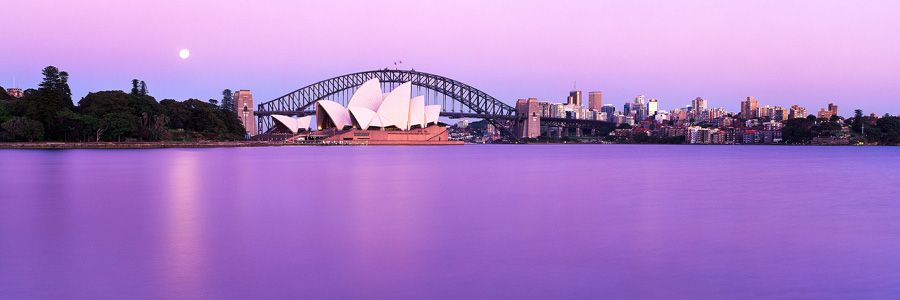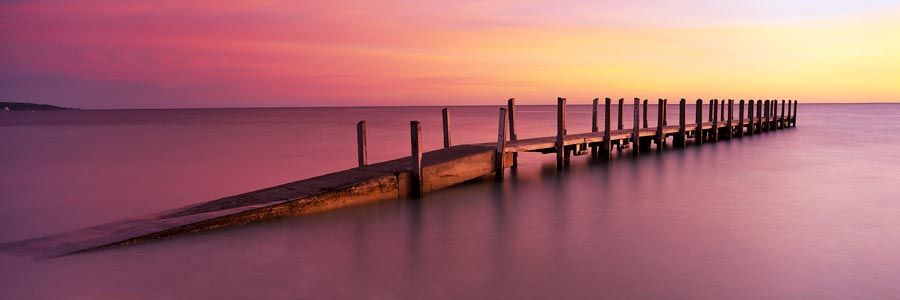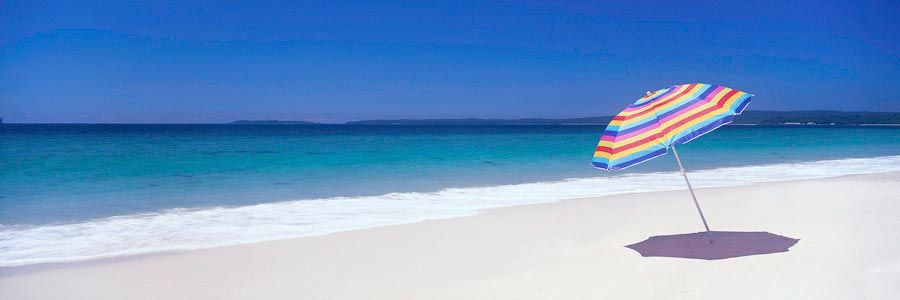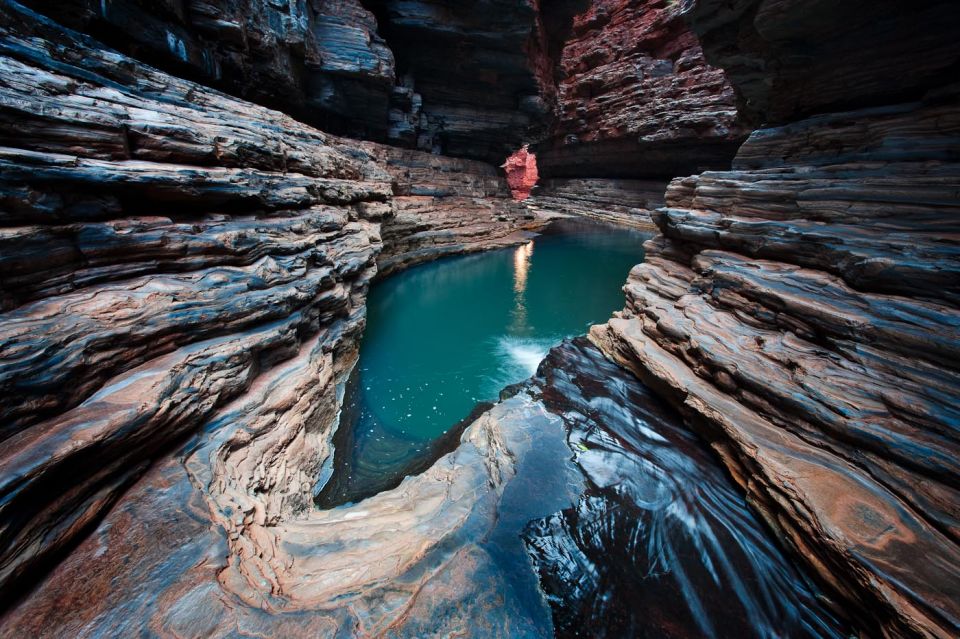Welcome to our series of photographers who inspire me. This time it’s Chris Morrison, an Australian-based landscape photographer who I originally stumbled upon quite by accident. I was blown away by the detail in his images and careful compositions. It’s rare to find photographers who can so seamlessly switch between film and digital, but Chris is one of them. You only need to look at his monster list of awards to realise the universal appeal of his images, including AIPP ACT 2012 Landscape Photographer of the Year.
What are the greatest/most extreme lengths you’ve gone to for a photo?
Photographing “Alpenglow on the Torres del Paine, Chilean Patagonia”. It may not be in the “Bear Grylls” category of story, but for me it was a big challenge and very rewarding.
To start with, I was about 40,000km and 70 days into a 60,000km, 92 day round the globe expedition – although I love travelling and photographing, you do get tired if you don’t get enough rest and look after yourself. The trip took months of planning and I was also 60 rolls into my 80 rolls of 617 velvia film – hard to acquire at the best of times, let alone in Patagonia.
It was day 3 of the trek, and I had heard word there was one bed left at Refugio Chileno, the mountain hut I needed to stay at in order to get up to Torres del Paine for any hope of a sunrise shot. Luckily I secured that final spot with some negotiation, got up at 2:30 the following morning, and started the 2.5 hour walk up to the mirador lake. Some people kindly warned me “there may be pumas around this area, but don’t worry, there has only been one recorded death a few decades ago”.
When you’re backpacking completely alone in the dark in the middle of Patagonia with only a few metres of light from your head torch, and only the sound of your footsteps, your mind can certainly conjure up some fear of pumas at the sound of some leaves falling from a tree! I got up to the mirador about 30 minutes before dawn. As it was still very dark, it was difficult to walk over the bouldery terrain as they all had snow on them. I got down to the lake, and set up in an awkward spot where it was neither comfortable to stand or sit. I then had the frustration of seeing the beautiful light begin to appear and try and take light readings, calculate long exposures taking filters into account, and change film, all with freezing fingers.
I shot two rolls of film (only eight shots, and really only four shots, as I bracketed) before the magic light disappeared, but was quietly confident I got the shot. The worst part of it all was having to then wait another three weeks to get home, and a further two weeks, to see the developed shots on the lightbox, and a further two weeks to have the shot drum scanned, before I could process it to the final result I had visualised at the time of capture, over two months prior. I suppose in hindsight, it was a whole combination of factors which were satisfying to overcome for the final result, as I had eyed off this location for years and managed to capture it as I wanted with only one chance.
What’s on your current Australian location ‘hit list’?
This is always a tough question for the landscape photographer! I did a phenomenal trip to the Flinders Ranges last year and came back with many more images than hoped for, sometimes the weather is kind to you and sometimes it’s not – this time it was. As for a hit list, you start making lists, as the more you see, the more you realise you don’t even know about. There are so many beautiful areas in Australia beyond the tourist brochures that the majority of people never know exist, or even bother to explore or notice. To answer the question, however, for a short trip I’d like to see the Great Otway National Park in Victoria, and I’m going there in two weeks. For a medium length trip, I’d love to see much of the Kimberley region, and Karijini National Park. I haven’t been to Western Australia yet, but this place is amazing on all accounts and it’s at the top of my aussie list. Apart from those two ideas, I plan to explore and capture more of the alpine region (both NSW & Victorian alps), Tasmania and the NSW South Coast.
You use both 617 film and also digital. What do you find are the specific challenges associated with each?
617 film: film presents its own challenges, and medium format film multiplies these challenges. 617 format, although shot from roll film, is really large format. As mentioned above, the fact you have four shots on a roll before changing (which takes time) is certainly a burden. When shooting with other photographers who primarily shoot digital, it can be frustrating hearing their shutter go off constantly, while I’m still feeding my film delicately through the holder and rolling it on, taking light readings and doing calculations in my head – you get into mental head space where you really have no idea what’s going on other than the task at hand. Having said this, this is a both a constraint and a blessing. Being limited to four shots means you better make sure that when you press that shutter, you’re photographing something good. Don’t bother with light that’s almost good enough. This forces an extremely selective approach to subject and composition, and has improved the way I see. This approach has benefited me when shooting digital, as I think my ratio of keepers:trash is surprisingly high compared to other photographers. However, when I want to experiment, then digital wins hands down for freedom. On the post-capture end of the challenges, everything continues to be slow in the process. As mentioned above, the process of developing, selecting slides on a (physical) lightbox and having them scanned is expensive and time consuming. However, when you see a final, well exposed, sharp scan (800mb tiff file) the result is amazing and much more detailed than my 5D2. It really is amazing. Additionally, the colours you obtain from sunrises/sunsets from velvia are almost impossible to replicate with digital. One more thing, carrying all your film in lead film bags when travelling overseas – takes up a lot more room than a few CF cards!
Digital does have its own challenges too, for instance, shooting star trails on film is great as there is no noise from the sensor and no battery – you just leave your shutter open as long as you want (but do have to remember to close before sunrise!). So that’s one thing the 617 has over my Canon 5D2. The other challenge, and probably less obvious, is composing 3:1 ratio panoramas. With digital, I find this very difficult when merging photos as you can’t put a frame around it. With my 617, I can walk around with my ‘finder’ (a small attachment about the size of a miniDV tape) and frame exactly how I want to compose the 3:1 panorama. They are custom made to the lens and the camera by Linhof, and unfortunately cost about $1,000 each (should give an indication to the price of the actual 617 schneider lenses)! Additionally, as you’re shooting the 3:1 composition with one shot, through one lens from one fixed position, the perspective feels very natural, which is difficult to achieve when merging digital files. Also, I have multiple finders for my 617 camera, so I can instantly choose which composition I want for two different prime lenses, as opposed to having to put both lenses on my DSLR, and having to switch lenses, just to see the difference. They really have made the difference Not having these on a DSLR is a definite frustration for anyone shooting prime lenses, for which there is no solution other than to have a finder.
What’s involved with your post-processing workflow, and what tips do you have for readers in regards to post?
This is a very important part of the process. I take an approach that I remain true to the original scene whilst allowing my creative expression to come through. I also believe in the value of hand-crafting as much of the process as I can, to make the image unique. This means I have few automated actions where I apply the same processing to all my images. I’ll usually start with the raw image or raw scan, and think about where I want to take the image, which means each workflow varies and prevents repetition and all my images looking the same. The main rule is not to overdo it, and always ask for feedback on the image, as it’s easy to go too far. Another tip is to process an image and come back to it a few hours or a day later, as you may have a different take on it. Your mood can also affect the way you process it. I love to listen to specific music as I find I can lose myself in the creative process and enter a good mental ‘flow’, but this may not work for everyone.
What can we expect from you in 2013?
A new set of images released shot during 2012, including some shot on the Phase One IQ160 which are beautiful and detailed. More trips, including an international trip (destination TBA) and possibly an exhibition in conjunction with the Canberra centenary celebrations, among a few other things in between. I’ve also expressed interest in becoming a landscape category judge at the AIPP state awards late next year.
You can check out more of Chris’s work via his website www.chrismorrison.com.au































